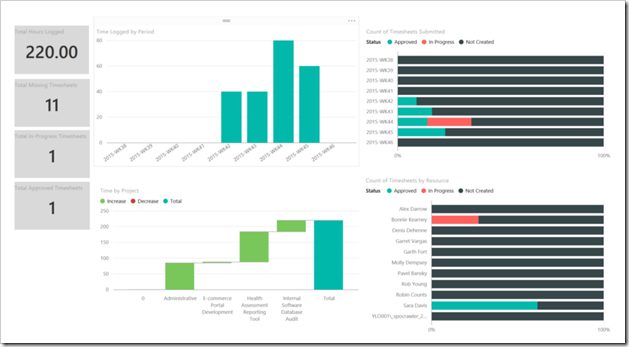Leveraging the Cloud to Visualize Project Time
Back in June 2004, I wrote a whitepaper directed toward Microsoft’s collaboration strategy (Capitalizing on Collaboration: Microsoft’s Collaboration Strategy) which included some recommendations, such as offering a hosted version of SharePoint – well before any announcements of what would later become Office 365. But twelve to fifteen years ago, I was also very much plugged into what was happening in the project and portfolio management (PPM) space, having worked with a couple hosted PPM vendors in consulting gigs, and developing a friendship with the then-CEO of Project Arena (now Innotas), which at the time was at the bleeding-edge of cloud-based PPM. Of course, in 2004 I had just completed a year of helping Hewlett-Packard deploy their Keychain internal collaboration platform, and prior to that had spent a couple years at a well-funded startup creating a hosted collaboration platform (E2open), so my mind was very much on the need for – and difficulties surrounding – cloud-based collaboration and management technology. On the latter point, I wrote the following recommendation:
Project Portfolio Management
Microsoft Project needs to be taken back to formula – Microsoft should re-architect the application for the team, modeling it after the web-based portfolio management offerings that will soon dominate this space. Microsoft needs to begin thinking about projects not as standalone efforts, but as components of a larger effort (a multi-project "program," or as part of a product or business unit).
Unless you can see across multiple projects, you can’t improve the overall program or business unit. Until you have visibility of efficiencies across multiple programs or business units, you can’t improve your product. Without visibility of what is actually happening with your product, you won’t truly understand the impacts of market changes to your overall business.
Of these recommendations, project portfolio management is the area in which Microsoft is least focused. There is tremendous opportunity – either through acquisition or new development – for Microsoft to expand their MS Project perspective and quickly capture the lion share of this market segment. Whether project or product-focused, companies need a system that manages time, tasks, resources, metrics, and visibility across the value chain – seamless integration with team-based collaboration tools and legacy systems via a robust application integration solution will make buying from Microsoft just that much easier.
More than a decade later, I think the opportunity still exists for Microsoft. With the release last week of Project Server 2016 Beta 2 (along with SharePoint Server 2016 Beta 2) the platform is getting some attention – and not just because its riding shotgun to the SharePoint Server announcement. While I have been out of the PPM space for quite some time, I lived in that world long enough (and managed some really painfully awful solutions) that I am excited by some of what I hear from my Project MVP friends around the improvements to resource management and new data visualization capabilities (like heat maps and the ability to view multiple timelines) are huge. Between Project and the rapidly expanding Office 365 analytics capabilities, I see now that all PPM experts and SharePoint IT Pros need to become experts in PowerBI. Here is a snapshot of Microsoft Project Online timesheet reporting using PowerBI Desktop, which comes from the blog of Project MVP Treb Gatte (@tgatte):
As PPM moves into the cloud and begins to leverage the resources and scalability of the cloud via the Microsoft Graph and the increasingly accessible business intelligence capabilities within PowerBI, I really do believe that Microsoft is creating a PPM juggernaut. Similar to SharePoint Server, hybrid will become increasingly important for PPM customers – although the barrier for moving to the cloud is much lower for PPM, in my mind, and the business value of moving to the cloud much more clear. Now, if Microsoft can stay focused on solving for the end-to-end solutions and not over-build for their customers, I think there is a tremendous opportunity for more organizations to include Project Online as a key business system into their IT portfolios. If Microsoft over-builds, people will not adopt.
If you want to see more on how PowerBI can leverage Project Online data, you should definitely take a look at Treb’s post on the topic.





